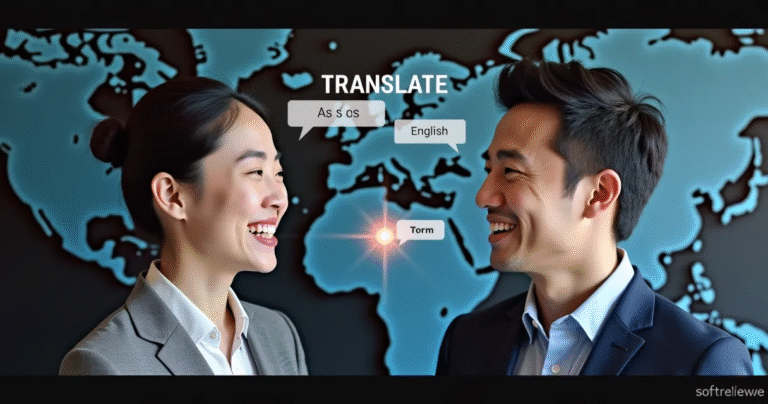Say Goodbye to Translation Apps: Google Meet’s New Feature is a Global Game-Changer
Breaking down language barriers in virtual meetings with revolutionary AI-powered translation
Real-Time Speech Translation
Seamless cross-language conversations with minimal latency, enabling participants to speak naturally while AI translates simultaneously, creating truly fluid multilingual dialogue.
Voice & Tone Preservation
Google’s advanced AI replicates speakers’ original cadence, inflection, and emotional tone, ensuring that not just words but the full spectrum of communication nuances are preserved across languages.
Initial Language Support: English & Spanish
The beta launch focuses on English and Spanish translation pairs, with Italian, German, and Portuguese coming in the next development phase as Google refines the technology.
Gemini-Powered Accuracy
Leveraging Google DeepMind’s cutting-edge Gemini AI models for natural, human-like translations that understand context, idioms, and specialized terminology for unprecedented accuracy.
Phased Rollout Strategy
First available to Google One AI Pro and Ultra subscribers in beta, followed by Workspace customers later, allowing Google to gather feedback and optimize performance before wider release.
Zero-Step Integration
Native to Google Meet with no third-party apps or extensions needed—translation activates automatically in supported meetings, making global communication as simple as joining a regular video call.
Google Meet Real-Time Voice Translation: A Comprehensive Guide
Connecting the World, One Meeting at a Time
In today’s globalized world, seamless communication is more crucial than ever. Google Meet, a leading video conferencing platform, is breaking down language barriers with its innovative real-time voice translation feature. This AI-powered tool 🤖 allows participants in a meeting to understand each other regardless of the language they speak. It’s a significant step towards fostering more inclusive and productive conversations across the globe. Google Meet’s real-time voice translation, powered by Google’s advanced AI, aims to bridge communication gaps and create a more connected world.
How Google Meet’s Real-Time Translation Works: A Peek Behind the Curtain

Google Meet’s real-time translation isn’t just about converting words; it’s about preserving the nuances of human communication. Here’s how it works:
The AI Engine Powering Seamless Communication
At the heart of this feature lies a sophisticated AI model, developed by Google DeepMind, called AudioLM. This model is trained on vast amounts of audio data and is capable of translating speech while maintaining the speaker’s unique voice characteristics, including tone, intonation, and emotion. This ensures that the translated speech sounds natural and authentic, not robotic. The integration leverages Google’s Universal Speech Model (USM) for speech recognition, converting speech into token sequences that Gemini then processes for translation.
Setting Up and Using Real-Time Translation in Google Meet
Using real-time translation in Google Meet is straightforward. Here’s how to enable it:
- Subscription Requirement: The meeting host needs to be a Google One AI Pro or Ultra subscriber.
- Enable Translation: In a Google Meet meeting, the subscriber clicks on “Meeting tools” at the bottom right, then selects “Speech translation.”
- Language Configuration: The subscriber chooses the desired language combination for all participants.
- Participant Settings: All participants click the “Speech translation” badge, select their spoken language and preferred language for hearing the translation.
It’s important to note that this feature is currently available only on computers.
Google Meet Real-Time Translation: More Than Just Words
The impact of real-time translation extends far beyond simply understanding the words being spoken.
Breaking Down Barriers for Global Teams
For businesses with international teams, this feature can be a game-changer. It allows colleagues from different countries to collaborate more effectively, brainstorm ideas freely, and build stronger relationships. Imagine a marketing team in New York seamlessly discussing campaign strategies with engineers in Tokyo, all in their native languages. 🤝
Enhancing Accessibility for All Participants
Real-time translation also enhances accessibility for individuals who may not be fluent in the primary language of a meeting. This is particularly beneficial for international students, immigrants, and anyone who wants to participate fully in conversations without language being a barrier. 🧑🎓
Real-Time Translation in Education: A New Era of Learning?
Beyond business, the potential applications in education are immense. Real-time translation can facilitate cross-cultural exchange programs, allowing students from different countries to learn from each other and collaborate on projects, regardless of their language skills. It can also provide access to educational resources for students who are not native speakers of the language of instruction. 📚
The Impact of Real-Time Translation: Voices from the Experts
Experts recognize the transformative potential of Google Meet’s real-time translation. According to Yulie Kwon Kim, VP of Product for Google Workspace, the technology is trained to capture “the speaker’s tone, intonation and emotion in the translated language,” resulting in more natural conversations. 💪
Navigating Challenges and Embracing the Future of Real-Time Translation
While real-time translation offers immense benefits, it’s essential to acknowledge the challenges and address potential concerns.
Addressing Accuracy and Nuance in Translation
AI-powered translation is constantly improving, but it’s not yet perfect. Accurately conveying nuances, idioms, and cultural references can be challenging. Google is actively working to improve the accuracy and reliability of its translation models. 🎯
Ensuring Data Privacy and Security
Data privacy is another crucial consideration. Google assures users that voice data used for translation is not stored or used to train AI models. All processing occurs in encrypted environments, adhering to Google Workspace security protocols. ✅
The Road Ahead: Continuous Improvement and Expansion
Google is committed to continuously improving and expanding the capabilities of its real-time translation feature.
Beyond Words: The Future of Global Communication with Google Meet
Google Meet’s real-time voice translation is more than just a feature; it’s a glimpse into the future of global communication. As AI technology advances, we can expect even more sophisticated translation tools that seamlessly connect people from different cultures and backgrounds. This feature promises a future where language is no longer a barrier, and communication is truly global. 🚀
The current version supports translation between English and Spanish, but Google plans to add Italian, German, and Portuguese soon. One participant with a Google AI Pro subscription needs to have it enabled, and everyone in the meeting can utilize it.







